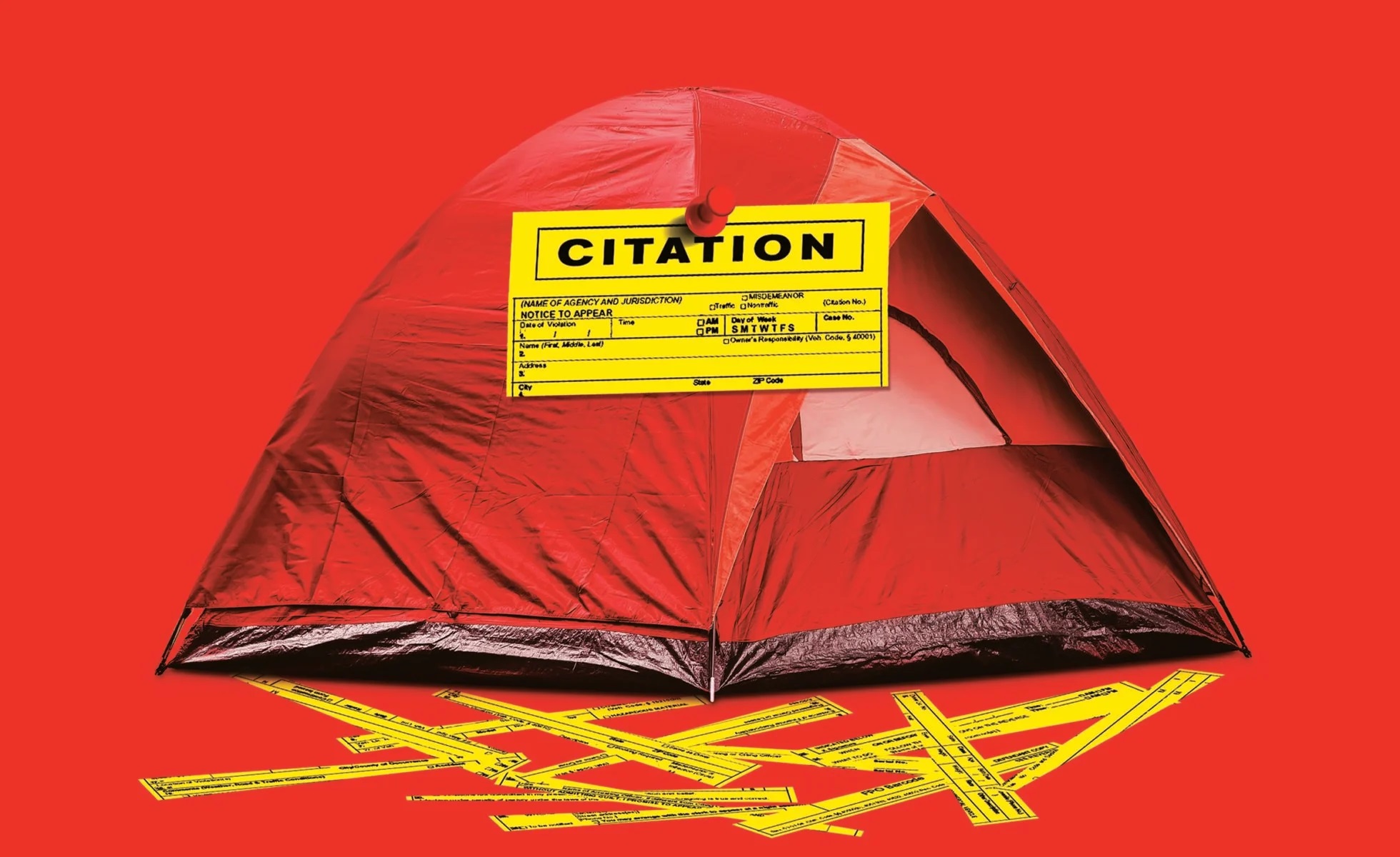More than half a million people are estimated to be homeless in the United States. This alarming statistic has undoubtedly been exacerbated by the COVID-19 pandemic, with a “7% increase among individuals experiencing unsheltered homelessness, marking the first time there are more individuals living unsheltered than in shelter,” according to the National Alliance to End Homelessness. Yet despite increasing rates of homelessness, help appears to be far off. Systematic criminalization has perpetuated the cycle of homelessness that plagues the United States, and efforts to continue this cycle have only increased in recent months.
A History of Homeless Denigration
As pervasive as homelessness has been throughout American history, so has been its vilification. “Vagrants,” “beggars,” and “vagabonds” are labeled societal outcasts and poverty and homelessness is viewed as moral failure. The narrative that an individual’s poor choices are solely to blame for homelessness and extreme poverty has endured in the American mindset. Media portrayals of homelessness have been shrouded in damaging stereotypes, depicting the typical homeless person as a crazy, dangerous drunk or drug addict beyond help and beneath the rest of humanity.
While attitudes and portrayals of homeless people in entertainment media have become more sympathetic in recent years – though there is still a long way to go to achieve accurate representation – attitudes in mainstream news media have not changed. Right-wing media outlets such as Fox News have framed the high rates of homelessness in some cities as a nuisance that is frightening locals, hurting business owners, and preventing seven-year-olds from selling lemonade – a problem needing to be “cleaned up.”
Homelessness ≠ Crime
Homelessness has been criminalized, with 15% of incarcerated people having experiencing homelessness in the year before admission to prison, according to research conducted by the Prison Policy Initiative. And according to The National Review, homelessness is synonymous with crime.
On July 1, 2021, the Los Angeles City Council voted 13-2 to enact Los Angeles Municipal Code Section 41:18. This declares that “[no] person shall sit, lie or sleep in or upon any street, sidewalk or other public way.” Section 41:18 – a reworking of a previous ordinance that was declared unconstitutional in 2006 – places restrictions to all private property, as well as any space on a public sidewalk, within 500 feet of a school, day care, park, or library and anywhere within 500 feet of an overpass, underpass, freeway ramp, tunnel, bridge, bike path, or subway. With nearly half of the Los Angeles’ land now effectively off-limits, the criminalization of homeless people has faced criticism on social media, but mainstream media has fallen short in their coverage of the crisis.
Mainstream Media Missing the Mark
Mainstream outlets like MSNBC have been more sympathetic than the right wing in their coverage of the recent increase of homelessness. But this reporting still ignores the economic, racial, and historical causes of homelessness. Coverage on mainstream news outlets of all political leanings have dedicated more coverage to the billionaire space race than to America’s homeless crisis.
Homelessness in America is an extensive, complex, and increasingly dire problem. Still, an overall lack of urgency in and depth in mainstream news coverage prevails. Mainstream media should provide readers, viewers, and listeners with enough historical and societal context to recognize the complexities of homelessness, rather than cite the issues caused by its presence. Instead of focusing on the complaints of communities disturbed by the presence of homeless people, the media should be examining the cycle of poverty, homelessness, and criminalization that is plaguing the United States on an unacceptable scale.
Illustration by Matt Chase/ Texas Observer

